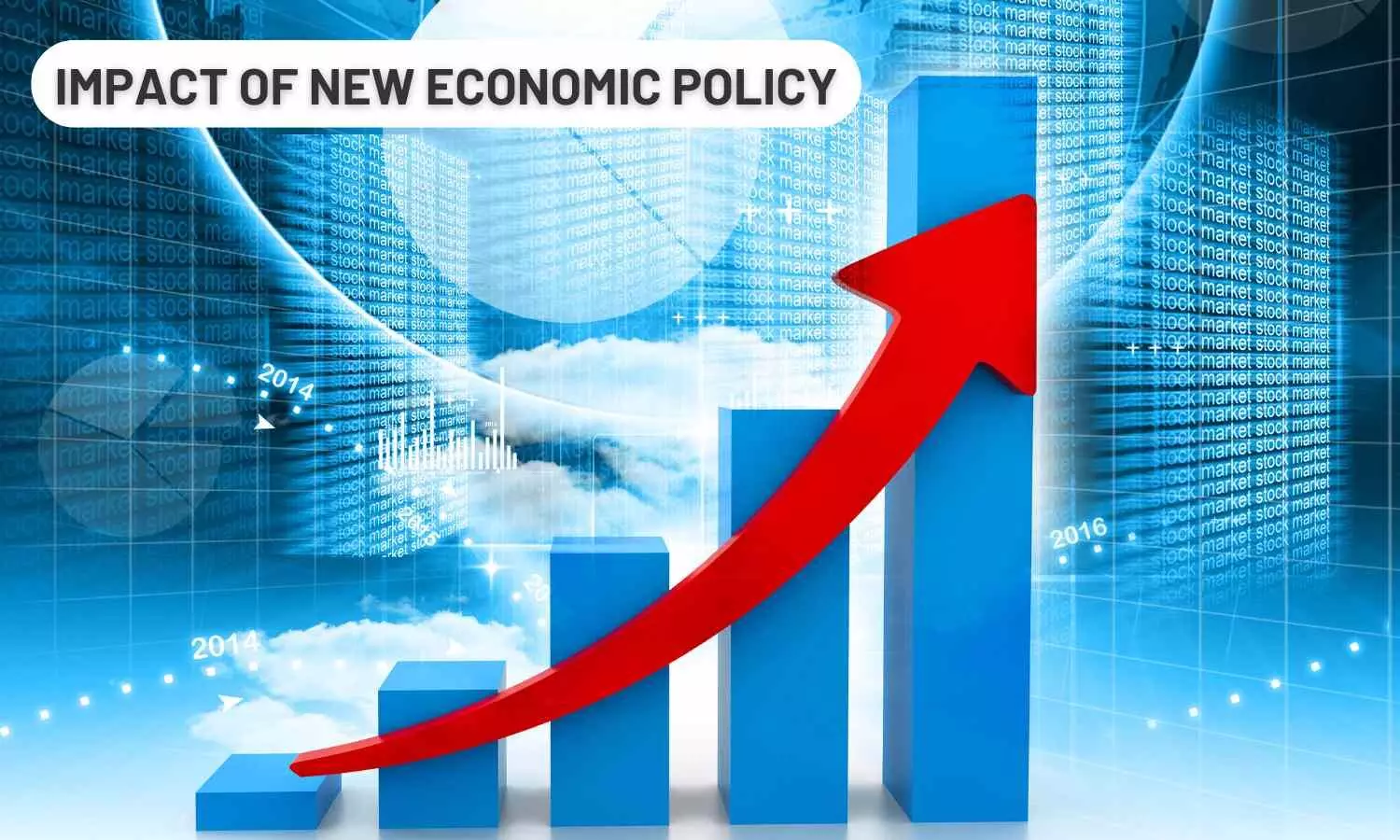Impact of the New Economic Policy
Delve into the profound impact of the New Economic Policy on India's economy. Analyse its effects on growth, trade, and investment while exploring its role in driving socio-economic development and reshaping market dynamics across various sectors.
Impact of the New Economic Policy

India experienced a financial crisis in 1991, which served as a catalyst for economic reforms. Several factors contributed to the crisis, including the Gulf War, which raised oil prices and cut remittances from the Gulf, low foreign reserves, and concomitant hyperinflationary conditions.
To combat this, the government was forced to enact a new set of economic policies. The government filed for a loan from the International Bank for Reconstruction and Development (IBRD), also known as the World Bank and the International Monetary Fund. The financial assistance came with the condition that the economy be opened up and private sector restrictions eased. The New Economic Policy was launched in 1991 as a set of policies.
Impact of Reforms After 1992
- Poverty decreased from 36% in 1993-1994 to 26.1% in 1999-2000. Poverty has decreased in both rural and urban areas.
- Reforms increased air travel and expanded the civil aviation sector. To enhance competition, the government implemented the Open Skies Policy in 1991 (allowing private firms to enter the aviation sector). Private enterprises in the domestic and international aviation industry are already reaping the benefits of this approach.
- International technology became more accessible as a result of reforms that opened borders to international goods. Mobile technology is an excellent example of these reforms. The vehicle business expanded after 1991, increasing availability, competitiveness, and cutting prices.
- As India's reputation in the global marketplace improved, so did the number of foreign visitors.
- Reforms resulted in measurable increases in international competitiveness in a variety of sectors, including auto components, telecommunications, software, pharmaceuticals, biotechnology, research and development, and professional services provided by scientists, technologists, doctors, nurses, teachers, management professionals, and others.
- The telecom business expanded substantially. In fact, economic reforms have benefited this industry significantly. The sector, which was previously heavily controlled and monopolised by the government, then had a number of competing service providers. The telecom policy evolved from the National Telecom Policy 1994, which aimed to open all aspects to private operators.
Positive Effects of New Economic Policy
Some of the positive reforms of the new economic policy are listed below:
1.India overcame its worst economic crisis in a remarkable two-year period through reforms.
2.The BoP crisis ended by the end of March 1994, thanks to prudent macroeconomic stabilisation policies such as rupee devaluation and other structural adjustments, and foreign exchange reserves increased to USD 15.7 billion. Both FDI and FII inflows to India had increased considerably.
3.India's economy also got more integrated with the global economy. India's total exports of goods and services as a percentage of GDP rose from 7.3 in 1990 to 14 in 2000. Imports increased gradually but significantly, from 9.9% in 1990 to 16.6% in 2000. In ten years, the total goods and services trade-to-GDP ratio rose from 17.2% to 30.6%.
4.Increased competition in areas such as banking had resulted in more customer choice and efficiency as a result of changes. It has also caused an increase in private-sector investment and growth. Inflation rates declined as reforms enhanced the output of goods and services, causing prices to fall or stay constant. Inflation was also kept under check through competition. From 1950 to 2000, GDP increased dramatically.
Adverse Effects of New Economic Policy
Some of the negative reforms of the new economic policy are listed below:
1. The reforms mostly impacted the official economy; agriculture, the urban informal sector, and forest-dependent inhabitants did not see significant changes. As a result, growth was uneven, and economic freedom was not dispersed fairly.
2. Economic liberalisation in the organised industrial sector (subject to tight labour restrictions) had led to little job growth. The market-based economic developments usually exacerbate disparities between the rich and the poor, as well as between developing and developed countries.
3. Healthcare and education are two social sectors that have been overlooked. Despite their importance, these areas were not prioritised, as seen by today's disturbingly poor education and health indices.
4. Economic changes had accelerated development but failed to provide enough jobs. For example, after declining to 5.61 percent in 1993-94, the rural unemployment rate increased to 7.21 percent in 1999-2000, as did the overall unemployment rate (urban and rural).
Conclusion
We infer that agricultural production increased significantly when the New Economic Policy was established. Farmers were given the option of selling portions of their harvests to the government in exchange for monetary compensation in order to stimulate economic growth.

